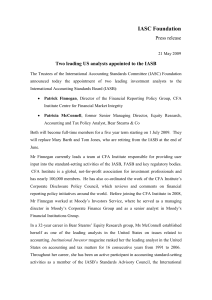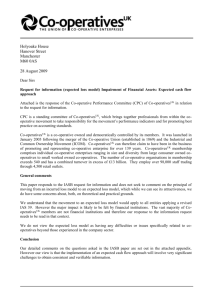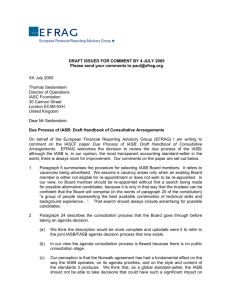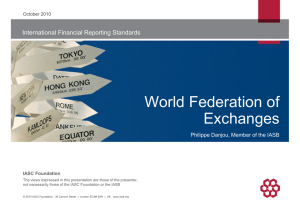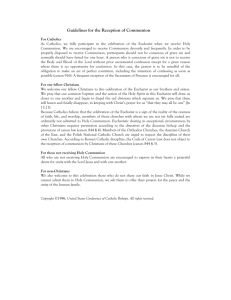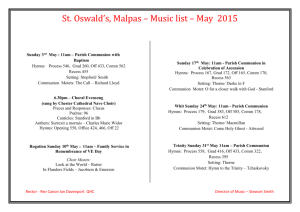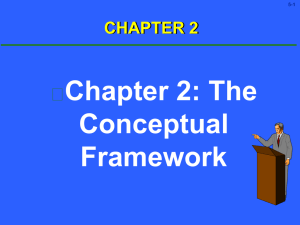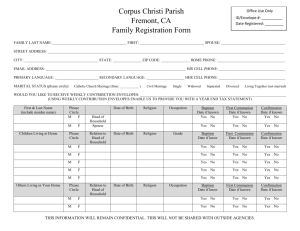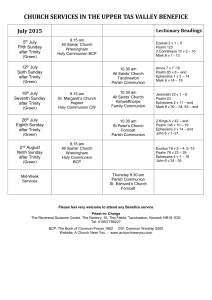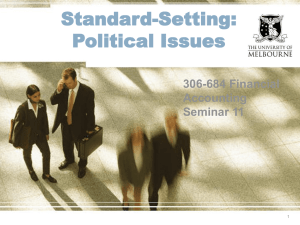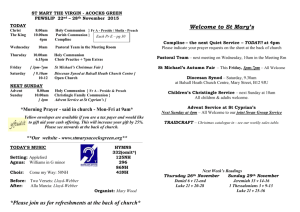view comments
advertisement
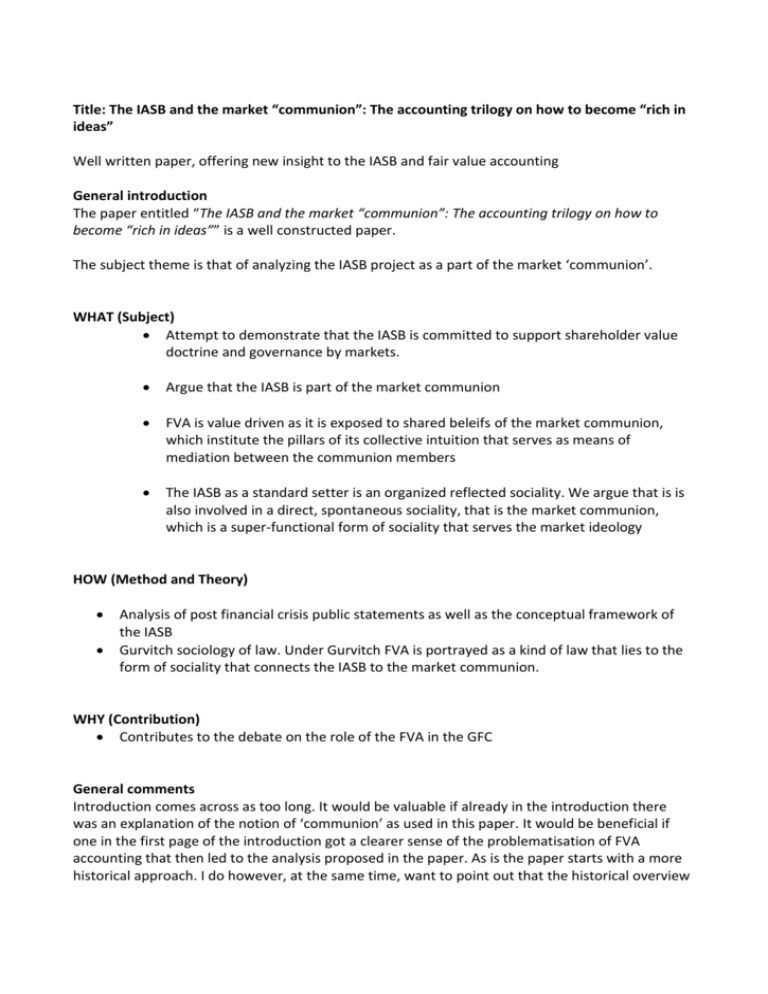
Title: The IASB and the market “communion”: The accounting trilogy on how to become “rich in ideas” Well written paper, offering new insight to the IASB and fair value accounting General introduction The paper entitled “The IASB and the market “communion”: The accounting trilogy on how to become “rich in ideas”” is a well constructed paper. The subject theme is that of analyzing the IASB project as a part of the market ‘communion’. WHAT (Subject) Attempt to demonstrate that the IASB is committed to support shareholder value doctrine and governance by markets. Argue that the IASB is part of the market communion FVA is value driven as it is exposed to shared beleifs of the market communion, which institute the pillars of its collective intuition that serves as means of mediation between the communion members The IASB as a standard setter is an organized reflected sociality. We argue that is is also involved in a direct, spontaneous sociality, that is the market communion, which is a super-functional form of sociality that serves the market ideology HOW (Method and Theory) Analysis of post financial crisis public statements as well as the conceptual framework of the IASB Gurvitch sociology of law. Under Gurvitch FVA is portrayed as a kind of law that lies to the form of sociality that connects the IASB to the market communion. WHY (Contribution) Contributes to the debate on the role of the FVA in the GFC General comments Introduction comes across as too long. It would be valuable if already in the introduction there was an explanation of the notion of ‘communion’ as used in this paper. It would be beneficial if one in the first page of the introduction got a clearer sense of the problematisation of FVA accounting that then led to the analysis proposed in the paper. As is the paper starts with a more historical approach. I do however, at the same time, want to point out that the historical overview provided in the first few pages is excellent! It was well written and certainly relevant for the paper… I must say I greatly enjoyed the historical overview that initiated the paper (pls forgive my mixed message in this general comment). Review comments: The title of the paper, makes the reader curious on the concept of the market ‘communion’. However, in reading the paper the conceptual grounding and explanation of this concept does not seem to come across clearly. The authors could consider developing this (I realize there is also an earlier paper that develops the concept) and its link to Gurvitch. As a reader I would like an articulation of the strengths of Gurvitch to the FVA analysis (versus the use of other sociological frameworks f.ex.). Annisette and Richardson (2011) explored the sociology of worth and how it offers accounting researchers a theoretical framework which allows for a potentially nuanced analysis of the critiques and justifications used in a wide range of accounting situations including the setting of accounting standards An elaboration of the method would be relevant for the reader. How many / what type / and when were documents analysed? How was the analysis carried out? There is a mention of use of content analysis of publicly available documents, more specificity would be relevant to the paper. Is the work of the IASB not largely in terms of FVA driven by mainstream perceptions of serving the public interest, which is problematic? Is this relevant to your analysis? In general, the link between FVA and public interest in the literature may be considered. The conclusion offers insightful thoughts on how the study contributes vis-à-vis other, for example, institutional studies. Some of these insights offered in the conclusion, could be developed and integrated in the paper.
